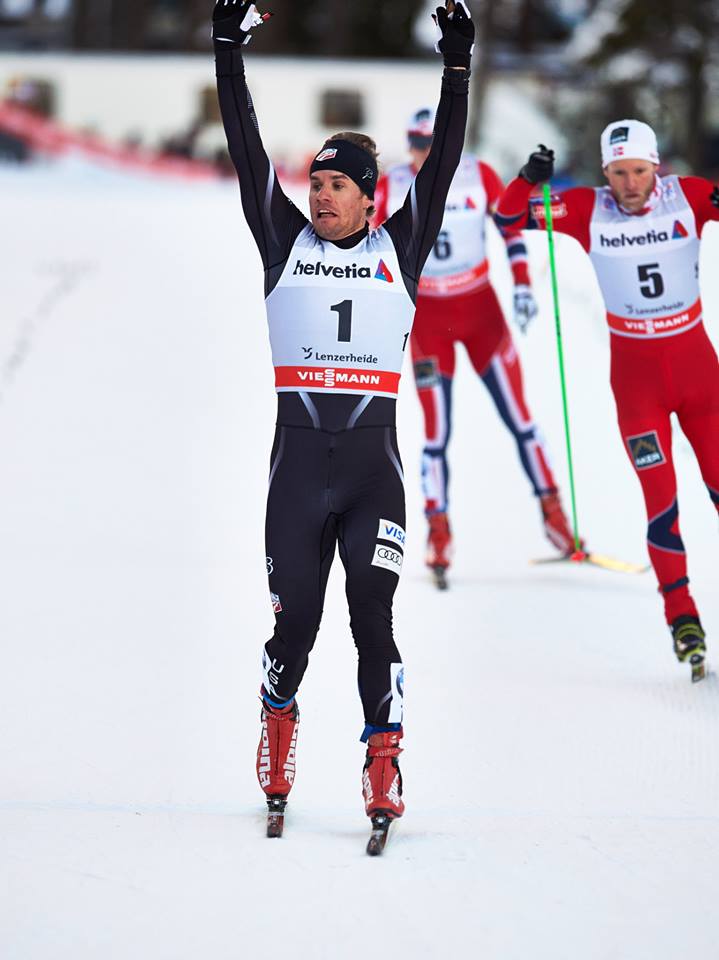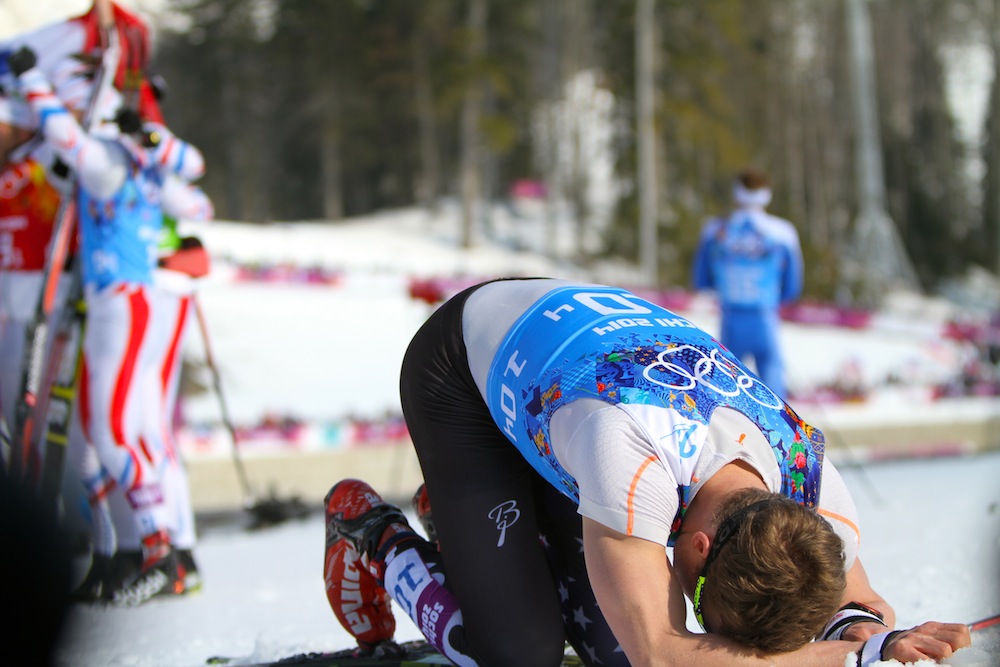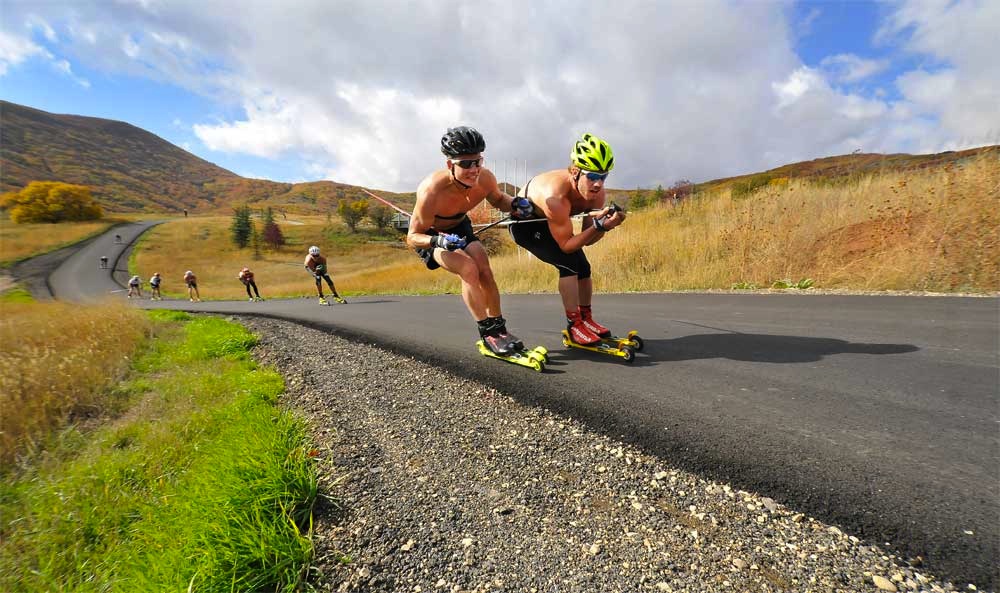
Simi Hamilton had never made a World Cup final, let alone won a stage World Cup. That all changed Dec. 31, 2013 with his momentous victory in the third stage of the 2014 Tour de Ski.
Hailed around the U.S. as part of a major shift towards improved American results, his win was the first by an American male since Bill Koch in 1983.
However, even after such a significant win, Hamilton said there hasn’t been much change to the 27-year-old’s training routine. Other than searching for potential sponsors to line his racing hats and headbands, Hamilton’s only adjustments for the 2014/2015 season come in the form of several small but effective “gear shifts.”
To understand these shifts it’s important to take a look back at Hamilton’s 2013/2014 season, which he considers his best to date. However, even a successful season can have its pitfalls.
“[The season] was still a little more inconsistent than I really would have liked it to be. With the Olympics it didn’t really pan out like I hoped they would and there was some funky stuff with conditions and breaking my pole. I felt like I could have skied better there,” Hamilton told FasterSkier.

Heading into the post-Olympic year, Hamilton said that he doesn’t need to alter much in his training routine in order to maintain his results. He explained that past training plans had prepared him well for the racing season and said that he knew he was “doing the right stuff.”
“I’m really not changing too much around. In general my fitness on a year-to-year basis has improved. I’m confident that next year it will be even better and that I will be able to string together more consistent results,” he said.
Despite the consistency in his training routine, Hamilton has been working on building several key aspects of his skiing that aided him in achieving last year’s strong results.
One of the main focuses of his summer training has been to make a conscious effort to analyze the terrain of each course and make adjustments accordingly.
“Nothing is the same, so you are never going to keep the same V2 from a flat stretch into a climb. As I’ve been training this summer I’ve been trying to focus on that – all these little gear changes. Whether they are subtle or major, you are constantly having to adjust your tempo, stride, and power to match what the terrain does,” he explained.
The Aspen, Colo. native said that many of his best results came when he was focused on the terrain and its transitions. He pointed the Tour’s third stage, saying that his ability change tempo, power application, and glide throughout the varying course played a central role in his victory.
Now the goal is to apply that mentality and focus to every race – especially when it comes to classic skiing.
FasterSkier caught up with Hamilton as the U.S. Ski Team was wrapping up its Lake Placid camp in September. While Hamilton entered with ambitions of a consistent and productive camp, he was hindered with an ankle injury during an Aug. 28 run in the Adirondacks.
The World Cup stage winner, who has a history of ankle-related problems, said the injury was not serious. However, he was unable to fully participate in most of the camp’s trainings and double poled the 2014 Climb to the Castle to ease any pressure on his ankle.
Hamilton explained he wasn’t sure when he would be completely healed, but was confident that he would be back to full training in a couple weeks.

The 27-year-old is currently in his second year of training with the Stratton Mountain T2 team. A transplant from the Sun Valley Ski Education Foundation and alumnus of nearby Middlebury College, he said the team environment at Stratton has aided in his improvements and training throughout the year.
While Hamilton earned his World Cup stage win under the guidance of former Stratton coach Gus Kaeding, he said that the team’s new coach, Patrick O’Brien, has been a perfect fit for both him and his teammates.
“Pat O’Brien has been a great asset to the team this year. He really understands – having just come from the Craftsbury team – the whole infrastructure right now,” Hamilton said.
With the racing season drawing closer, Hamilton is both excited and hungry to be back on the familiar glide of snow and take his place alongside the his fellow competitors. For now, however, Hamilton is working with O’Brien and his USST coaches to make small adjustments to his skiing as he enters the intensity of the fall.
“It feels like the season is close – and it is – but you still have to remember that there are two full months before we are going to be in Europe. I think if you spend that time well it can be a really valuable time to gain what you need to gain and get your body ready for a winter of racing.”
Lander Karath
Lander Karath is FasterSkier's Associate Editor from Bozeman, Montana and a Bridger Ski Foundation alumnus. Between his studies at Middlebury College in Vermont, he is an outdoor enthusiast and a political junkie.



